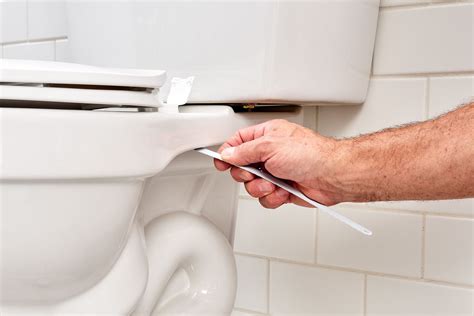Troubleshooting Loose Toilets: The Bolt Tightening Solution
A wobbly toilet is more than just an annoyance; it can lead to leaks, damage, and costly repairs. Often, the culprit behind a loose toilet is simply loose bolts connecting the toilet to the floor flange. This article will guide you through troubleshooting and tightening those bolts, providing a simple, often effective, solution to a common plumbing problem.
Why is My Toilet Loose?
Before jumping into tightening bolts, it's crucial to understand why your toilet might be loose. While loose bolts are the most frequent cause, other issues could be at play, including:
- Damaged Floor Flange: The flange is the metal ring embedded in your floor that the toilet bolts attach to. If it's cracked, broken, or improperly installed, tightening the bolts won't solve the problem. You might need a flange repair kit or professional assistance.
- Cracked Toilet Base: A cracked toilet base can also lead to instability. Unfortunately, this usually requires a toilet replacement.
- Improper Installation: If the toilet wasn't installed correctly in the first place, it's more prone to loosening over time.
- Settlement of the Floor: Over time, your floor might settle slightly, creating gaps and loosening the toilet.
How to Tighten Toilet Bolts: A Step-by-Step Guide
Once you've ruled out other issues, let's tackle those loose toilet bolts. You'll need a few simple tools:
- Screwdriver (usually Phillips head): Used to tighten the bolts. A ratchet screwdriver can make the job easier.
- Wrench (adjustable or socket): May be necessary to tighten the nuts on the bolts.
- Plumber's putty (optional): To create a better seal around the base.
Step 1: Inspect the Toilet Base and Bolts
Carefully examine the toilet base and the bolts connecting it to the floor flange. Locate the nuts (typically located under the toilet) that need tightening.
Step 2: Prepare the Work Area
Clear the area around the toilet. You'll need space to maneuver and work comfortably. Turn off the water supply to the toilet.
Step 3: Access the Bolts
Most toilets have access to the bolts from underneath. You may need to use a flashlight to see clearly.
Step 4: Tighten the Nuts
Use your wrench (or screwdriver if directly accessible) to tighten the nuts on the toilet bolts. Tighten them firmly, but avoid over-tightening, which could damage the toilet or the flange.
Step 5: Test for Stability
Once you've tightened the bolts, gently rock the toilet back and forth. It should now feel firmly secured to the floor.
Step 6: Reapply Plumber's Putty (Optional)
If you notice any gaps around the base of the toilet after tightening, you can carefully apply a fresh bead of plumber's putty to create a better seal.
What if Tightening the Bolts Doesn't Solve the Problem?
If tightening the bolts doesn't resolve the looseness, it's time to consider other possibilities:
H2: Is my toilet flange broken? How can I fix it?
A broken or damaged floor flange is a common cause of a loose toilet. You can often repair this with a flange repair kit, which typically involves adding a new ring around the existing flange to provide a better surface for the toilet bolts to grip. If the damage is extensive, however, professional help might be needed.
H2: How do I know if my toilet is cracked?
A cracked toilet base is difficult to detect without carefully examining it. Look for any visible cracks, especially around the base where it meets the floor. A crack is usually a sign the toilet needs replacing.
H2: My toilet still wobbles after tightening the bolts. What should I do?
If the toilet remains wobbly despite tightening the bolts, you might need to call a plumber. There may be underlying issues that require professional assessment and repair, such as a damaged flange, cracked toilet, or other unseen problems.
Preventing Loose Toilets
Regularly checking your toilet bolts can prevent future problems. An annual inspection is recommended, particularly if you notice any movement or wobbling. Early detection and simple maintenance can save you from more extensive and costly repairs. Remember, a securely fastened toilet is crucial for preventing leaks, water damage, and the inconvenience of a constantly wobbly fixture.

